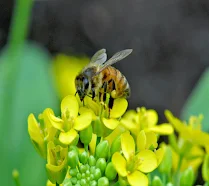Understanding the Sweet Differences: Honey vs. Nectar
Origins and Composition:
Nectar, the natural sugary liquid produced by flowers, serves as a vital fuel for pollinators, especially bees. This translucent liquid, primarily composed of water and simple sugars like glucose and fructose, entices insects with its sweet allure. Flowers produce nectar in specialized structures called nectaries, strategically placed to attract pollinators and ensure the transfer of pollen.
Honey, on the other hand, is a treasure crafted by bees. Through a remarkable alchemy process, honeybees collect nectar from flowers, transforming it within their bodies through enzymatic processes. This conversion involves regurgitating and re-ingesting the nectar several times, thus altering its composition. The bees then store the modified nectar in honeycombs within their hives, where it undergoes further dehydration, thickening, and ripening into the beloved substance known as honey.
Distinguishing Features:
Consistency: Nectar is a thin, watery substance, while honey exhibits a viscous, syrupy consistency.
Color and Taste: The color and taste of nectar vary widely among different flowers, whereas honey's nuances depend on the floral source but are largely influenced by the bees' processing methods.
Storage and Shelf-life: Nectar is a fleeting reward, consumed almost immediately by the pollinators or used in the production of honey. In contrast, honey, owing to its reduced water content and unique composition, boasts an extended shelf-life and can be stored for prolonged periods without spoiling.
Role in Nature: Nectar serves as a crucial incentive for pollinators, aiding in the transfer of pollen between flowers, thus contributing significantly to the reproductive cycle of plants. Honey, aside from being a delectable treat for humans, serves as the primary food source for bees, especially during seasons when flowers are scarce.
Human Interaction:
While nectar is a fleeting delight, often enjoyed by pollinators in the midst of their important work, honey has been cherished by humans for centuries. The extraction, harvesting, and utilization of honey have cultural, culinary, and medicinal significance in various societies worldwide. From sweetening foods to being a revered symbol in religious rituals, honey occupies a unique place in human history and culture.
In conclusion, while both honey and nectar originate from flowers and hold inherent sweetness, their compositions, roles in nature, and interactions with humans set them distinctly apart. Nectar entices pollinators and plays a pivotal role in plant reproduction, while honey stands as a testament to the intricate processes of bees, delighting human taste buds and holding historical reverence.
Understanding the nuances between these two remarkable gifts of nature enriches our appreciation for the interconnectedness and marvels found within the natural world.
Feel free to let me know if you need more information or further details on any specific aspect!

